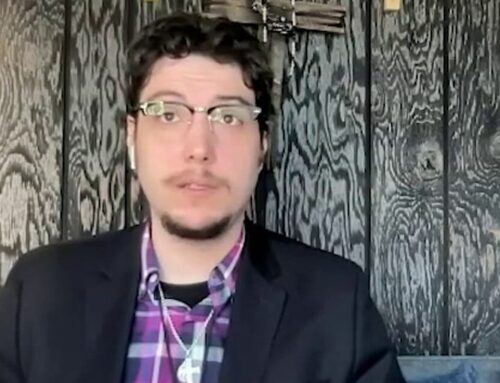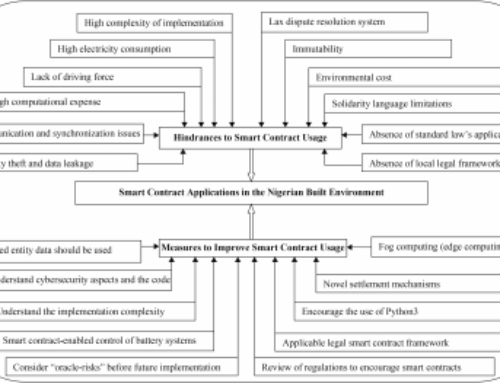Environmental lawyer and professor connects law, nature and spirit
October 29, 2025
Jim Blackburn’s career path began more than 50 years ago in a University of Texas School of Law classroom he didn’t want to be in.
“About halfway through law school, I figured that I didn’t like law very much,” said Blackburn, a professor in the practice of environmental law and the co-director of Rice’s Severe Storm Prediction, Education and Evacuation from Disasters Center. “Environmental laws in the United States were just being passed … and I loved the outdoors.”
He signed up for the few environmental courses he could find and even wrote a paper that won a national environmental law essay contest. After graduating law school, he headed to Rice, where he got a master’s degree in environmental science.
Blackburn’s life has since been devoted to the natural world. A lawyer, environmental advocate, professor and poet, he has spent his career fighting for the environment and the people who live in it.
“There’s a spiritual side of what I do,” Blackburn said. “I’ve been very fortunate. There are a lot of lawyers out there who are unhappy because they’re representing other people’s points of view. I’ve had the advantage of being able to pursue my own philosophy, my own thinking and my own spirituality with the work I do.”
Blackburn sparked a passion for the environment as a kid growing up in the swamps and bayous of central Louisiana. His family fished, hunted and lived by the rhythm of the outdoors.
“My father and uncles knew those swamps like the back of their hand,” Blackburn said. “Nature was a part of the upbringing. ”
Blackburn stopped hunting in his early 30s, but he said he still finds peace along the coast.
“If I had a bad day, I’d get down to the bay and just sit with the birds and the sunset, the cool breeze coming over the water,” Blackburn said. “It would calm my soul … There is a part of me that is just inextricably linked to the coast.”
Over the decades, Blackburn has watched the field of environmental science and conservation transform. When he was first getting his start, he said the national conversation was focused on “end-of-pipe control,” cleaning up pollution after it was created.
Advertisement
“That was the frame,” Blackburn said. “Now the environment is strategic. It’s in boardrooms. We’re talking about restructuring the economy. Old strategies for new problems don’t work. We need new ones.”
Blackburn said one of these new strategies involves revaluing nature itself.
“The best technology for removing carbon dioxide from the atmosphere is photosynthesis,” he said. “We have not been able to duplicate a technology anywhere as good as nature-created photosynthesis.”
The challenge, Blackburn said, is not scientific but social.
“You have to manage the humans that control the plants that are undertaking photosynthesis,” he said.
Blackburn helped create BCarbon, a registry launched through a stakeholder group at Rice’s Baker Institute. The program measures and verifies how much carbon landowners can store in soil, trees or wetlands and turns that storage into tradeable “carbon credits” that companies can buy to offset their emissions.
Philip Bedient, a professor of civil engineering and Blackburn’s longtime research partner, created the SSPEED Center with his co-director in 2009. Together, the two of them study how storms, floods and coastal systems can be managed in an era of climate change.
“We founded the center after Hurricane Ike,” Bedient said. “We wanted to make sure the lessons we learned weren’t lost, that Houston and the Gulf Coast could prepare for what’s coming next.”
Bedient explained that SSPEED’s modern projects, such as the Galveston Bay Park Plan concept that proposes a 25-foot in-bar barrier to protect Houston’s industrial corridor, now rely on artificial intelligence to analyze evolving storm patterns.
“These are systems built for decades of change,” Bedient said. “We can raise them as sea levels rise and as we learn more.”
Advertisement
Bedient said the complexity of such challenges means no one field can solve them alone.
“These problems are truly interdisciplinary,” he said. “We have architects, planners, economists, lawyers, environmental scientists and engineers all working together because no single discipline can solve them alone.”
Blackburn first began teaching at Rice in the 1970s through the School of Architecture, where he led a course that examined environmental factors in community design. Over the years, his teaching evolved, from environmental law to sustainable design, blending the scientific, legal and practical sides of conservation.
Maggie Bowers, who is currently enrolled in his Sustainable Design course, described Blackburn as an engaging and thoughtful instructor who brings real-world experience to the classroom.
“It’s incredible that we have him at Rice,” said Bowers, a Sid Richardson College senior. “He does a good job emphasizing that sustainability isn’t just environmental, it’s also social and economic.”
Blackburn said he sees teaching as another way of promoting environmental advocacy.
“A lot of students want to do something for the environment and don’t know how,” Blackburn said. “I try to show you can combine that concern with making a living.”
That sense of translation, turning ideas into something others can hold, is also something he practices in his poetry.
Blackburn began writing through an unexpected collaboration with painter Isabelle Scurry Chapman, a longtime friend.
“I had done a series of bird portraits,” Chapman said. “Jim came over, saw them, and said, ‘I can write poems about this.’ And I told him, ‘Well, do it.’”
Advertisement
The two have since published several books together, including “Earth Church,” a yearlong poem-and-painting exchange during the COVID-19 pandemic.
“The Earth is my spiritual center,” Blackburn said. “I think the poetry is loving, embracing and spiritual. It approaches people differently. It’s a nice yin to the yang of the legal and technical.”
Chapman said their collaboration reflects the spirit that runs through all of Blackburn’s work.
“He puts a spiritual spin on the natural world,” Chapman said. “It’s about caring for the Earth and everything that lives on it — the critters, the ocean, even the clouds.”
Blackburn said he has sometimes faced scrutiny from people whose jobs may be affected by environmental policy. Once, a young man asked him, “Why are you trying to take my job away?” The question stuck with him and continues to shape his perspective today.
“When people’s jobs are at risk … if we can solve the problems that we’re concerned about — air pollution, toxics, waste — then that’s a much better way forward,” he said.
That outlook, finding solutions that protect both people and the planet, also shapes how he views corporate sustainability.
“Most every corporation has a sustainability plan these days,” Blackburn said. “Some call it greenwashing, I do not. I think there is a serious belief that in the long term, the corporation will make more money by being climate adaptive.
“I think the changes will come,” he continued. “The question is, how fast, and will it be soon enough to avert some of the worst effects of climate change?”
The Rice Thresher encourages reader feedback and dialogue. Please react to this article or submit a letter to thresheropinions@rice.edu and continue the discussion on social media.
Search
RECENT PRESS RELEASES
Related Post


